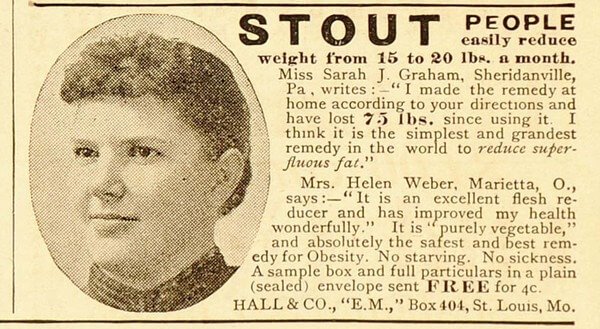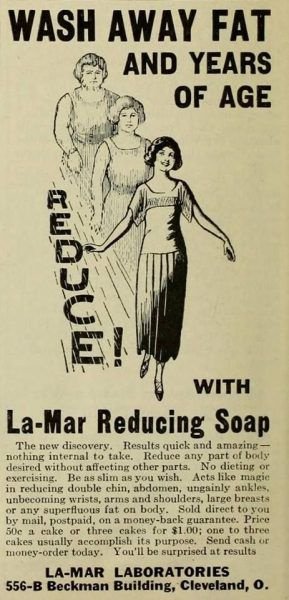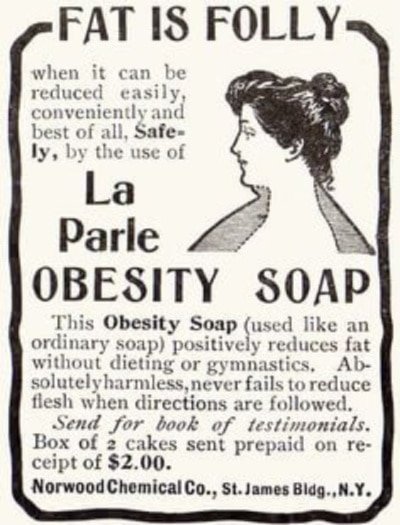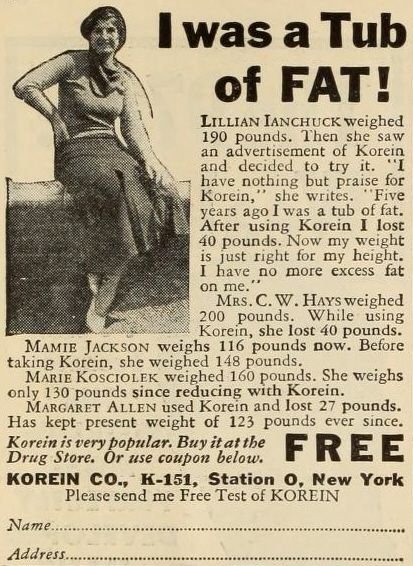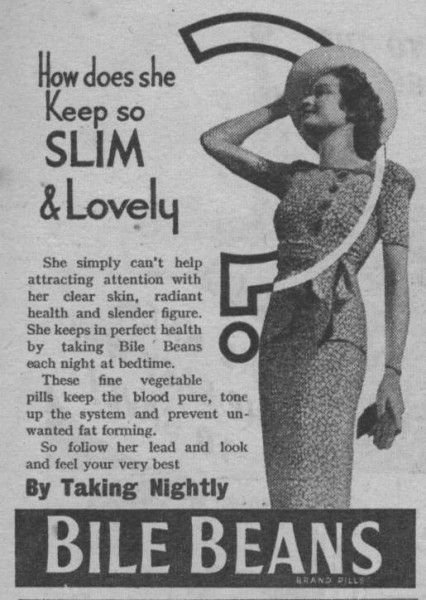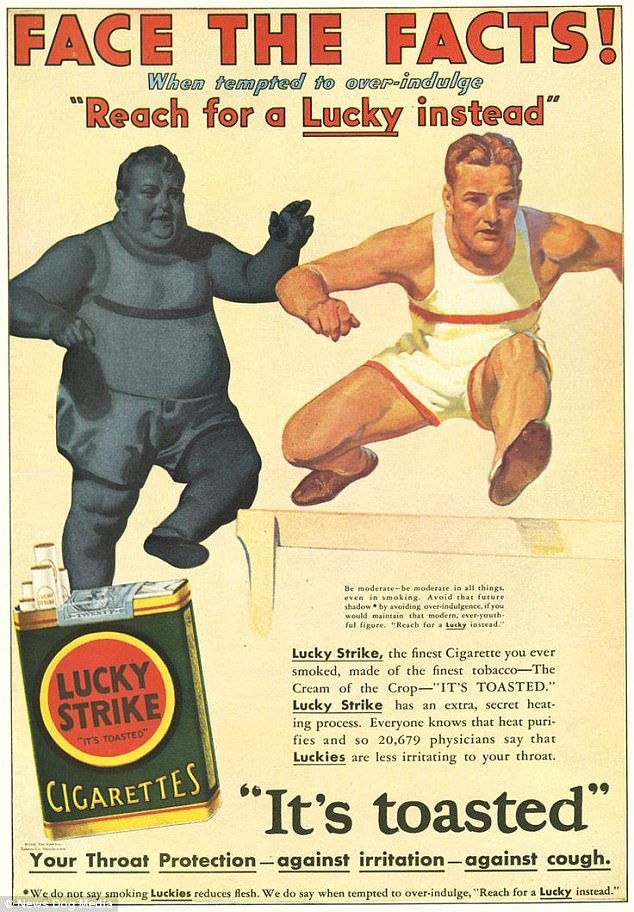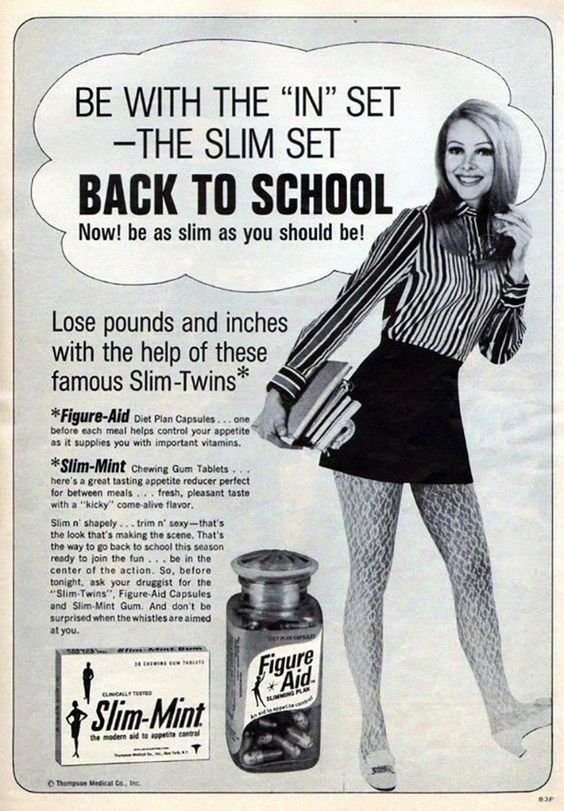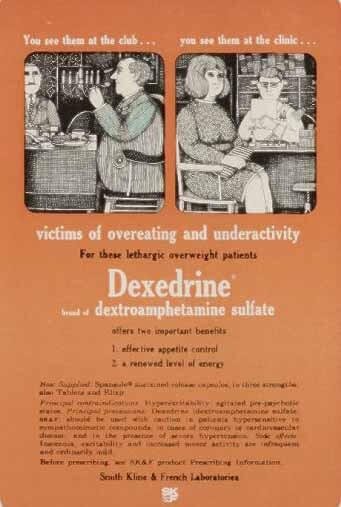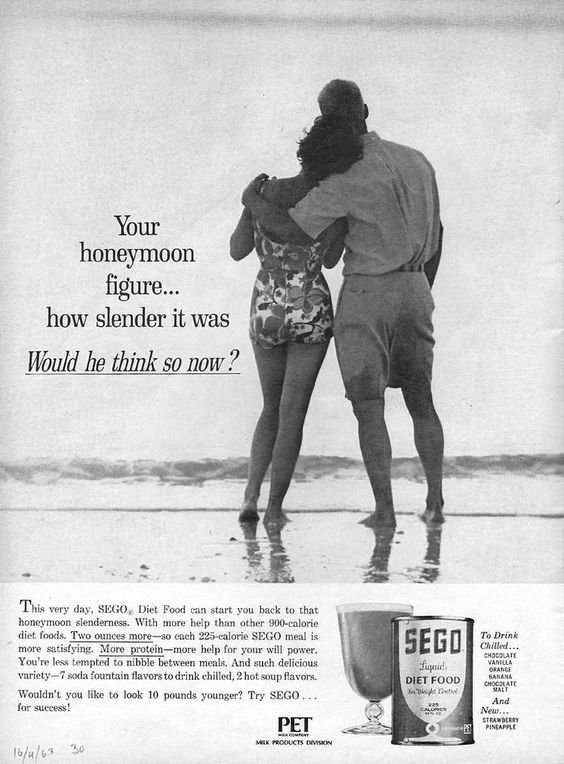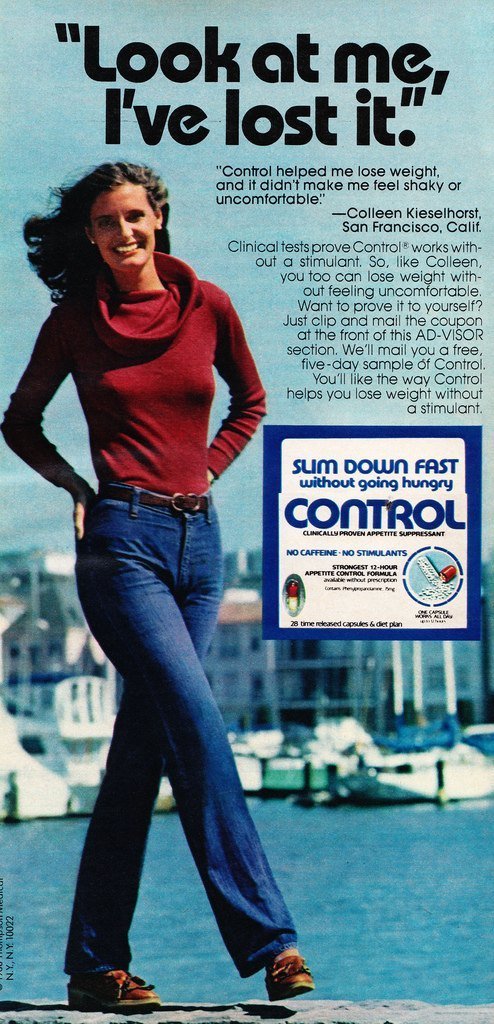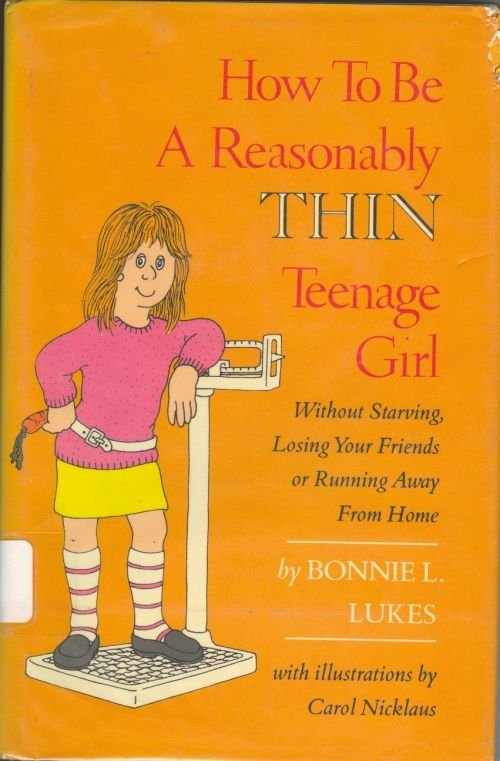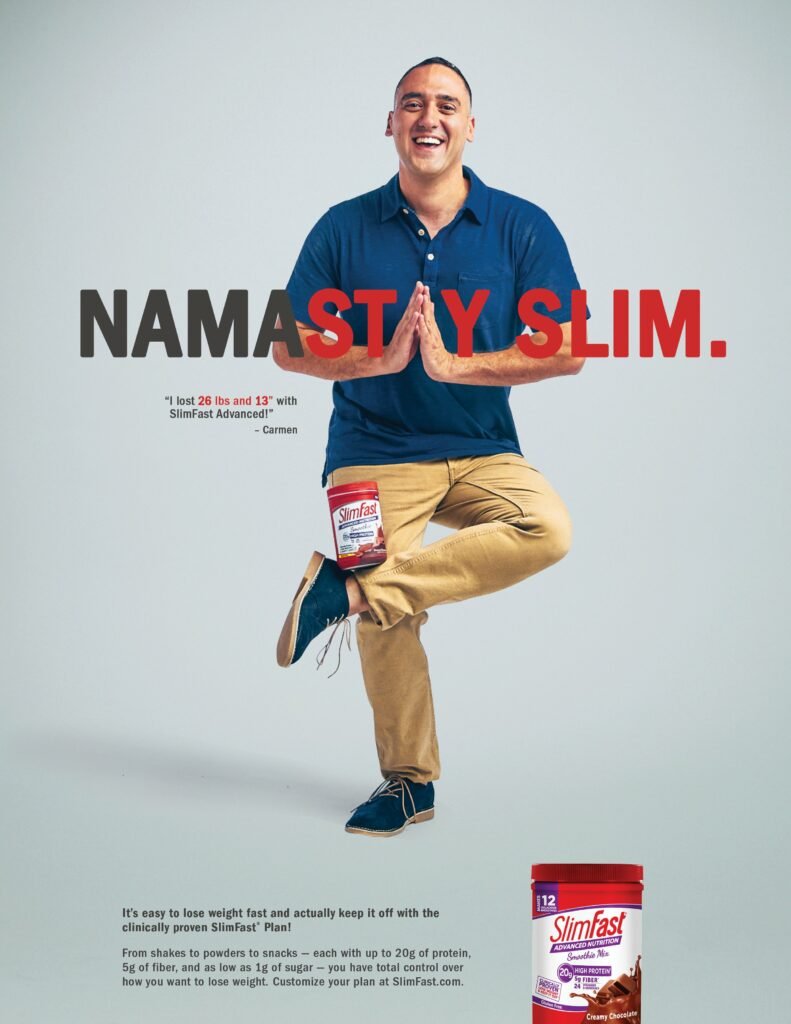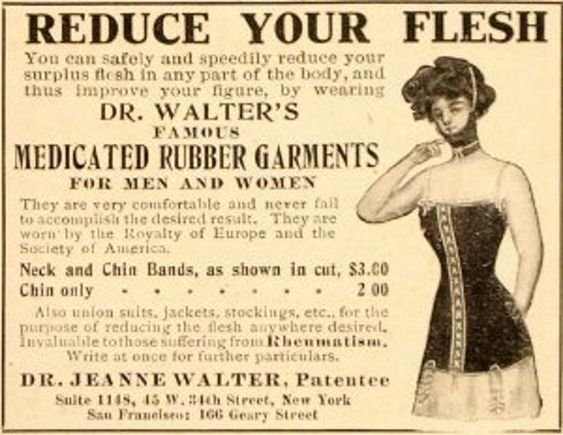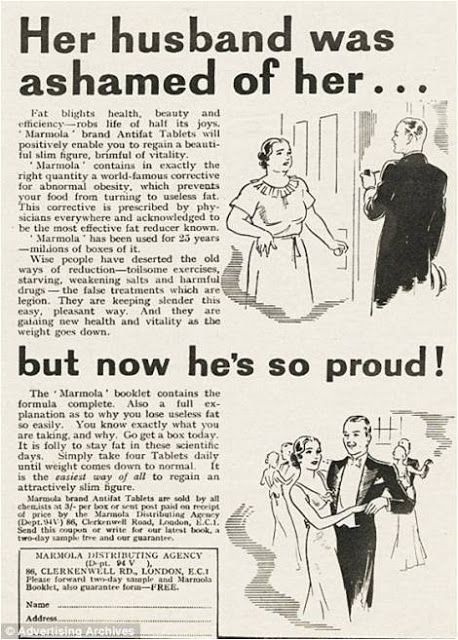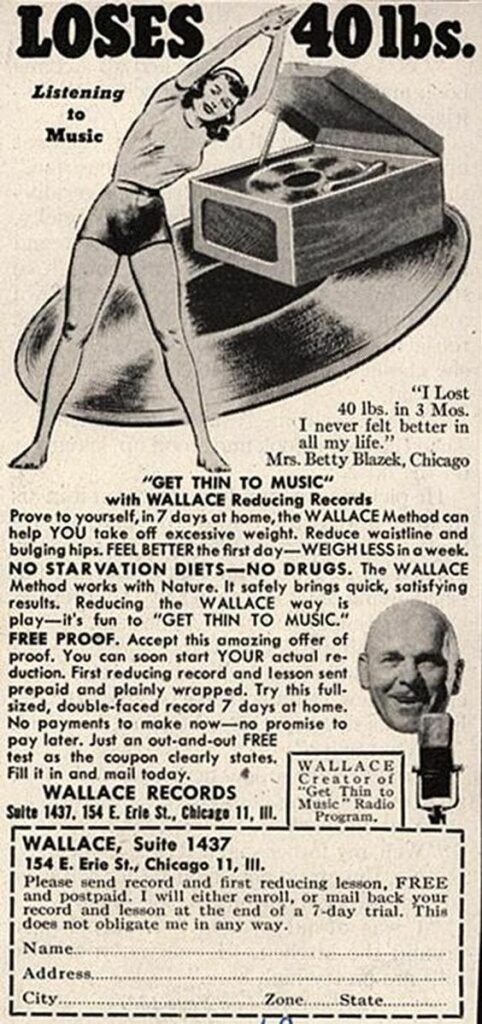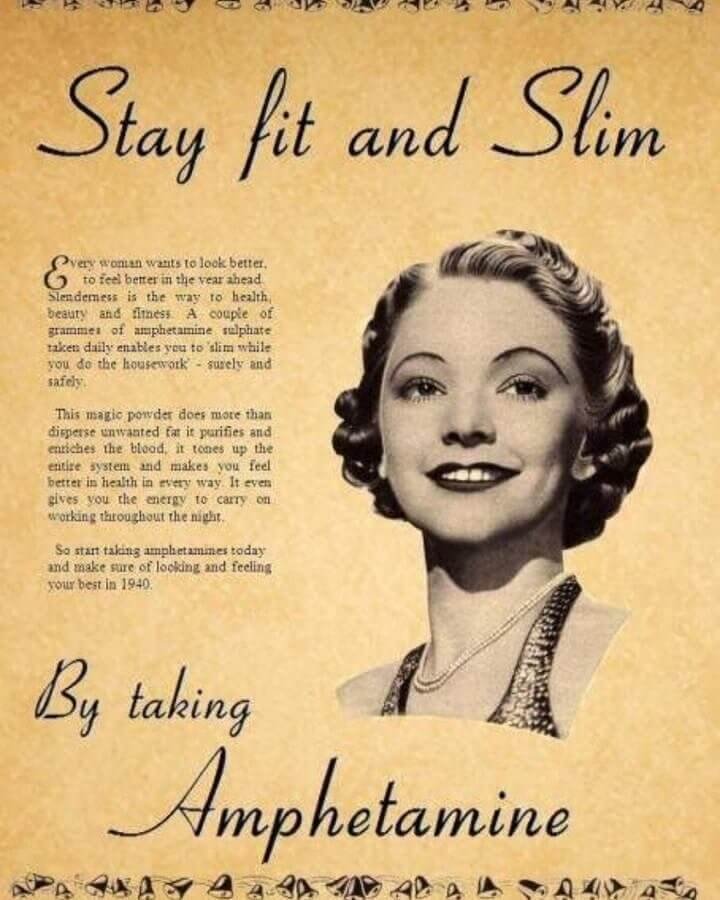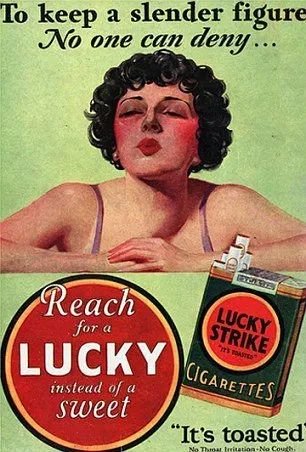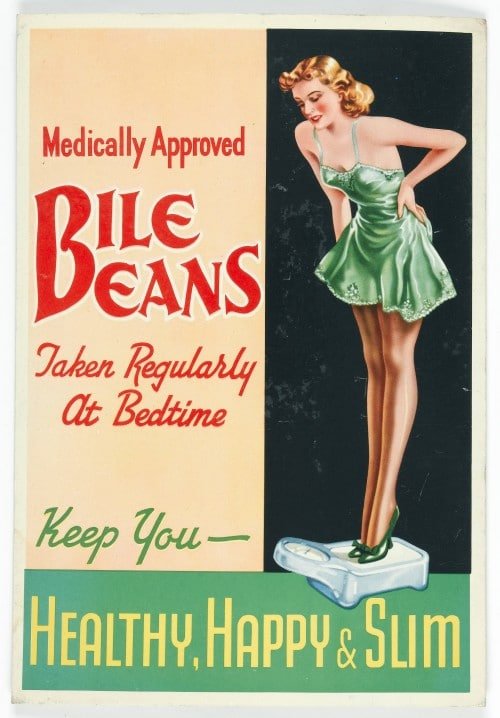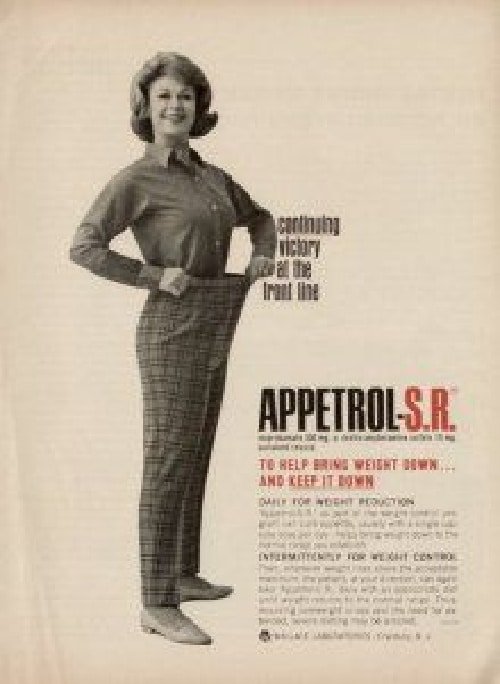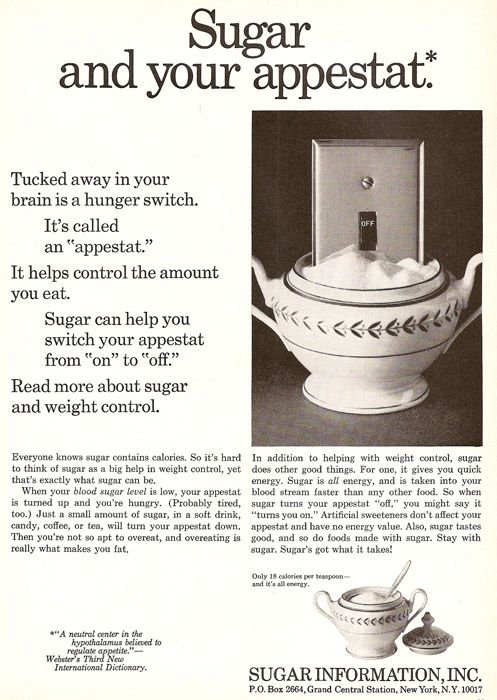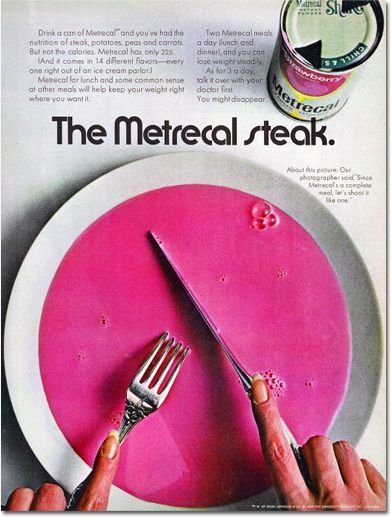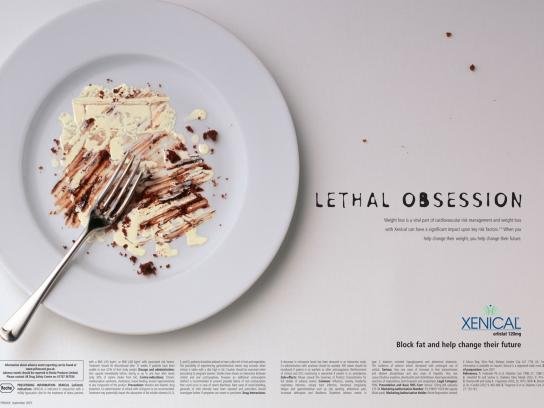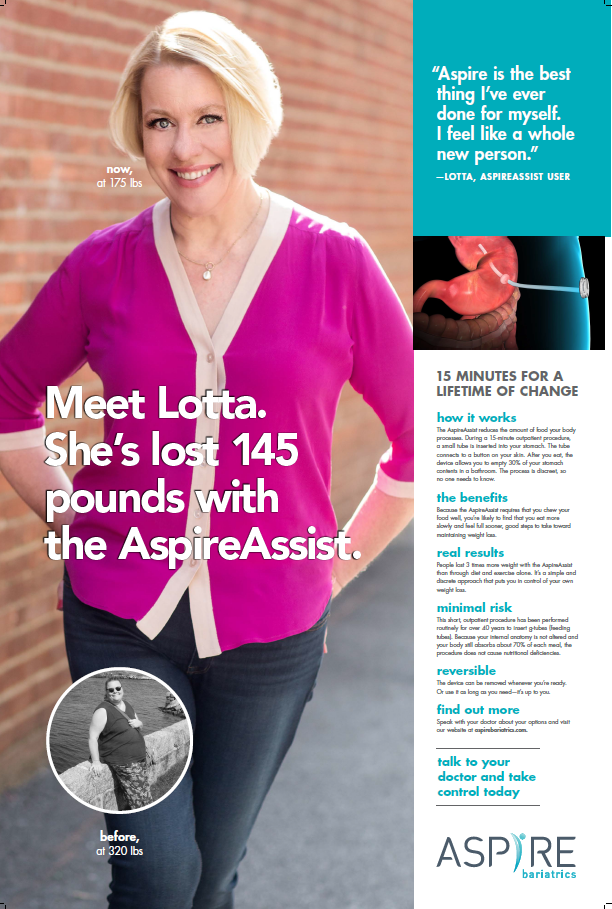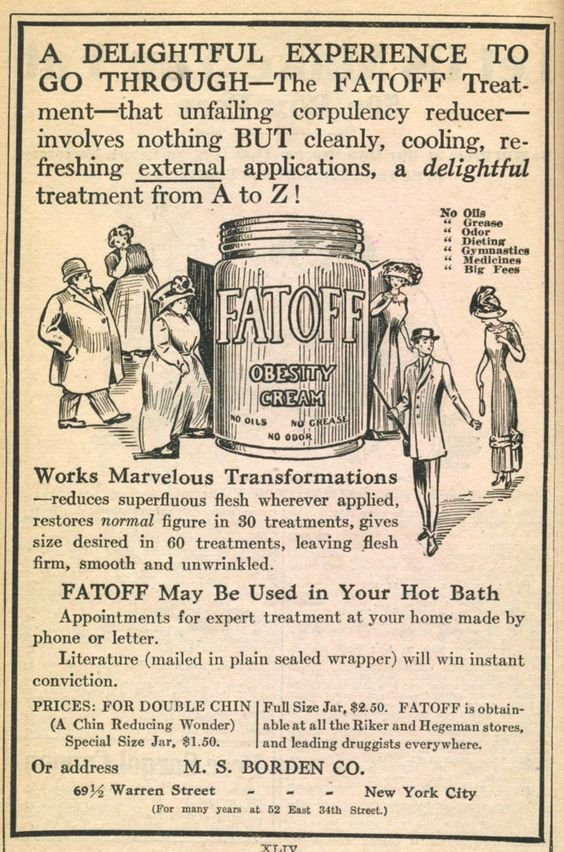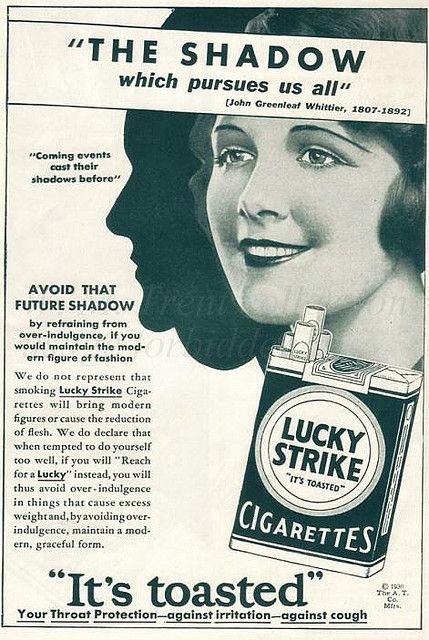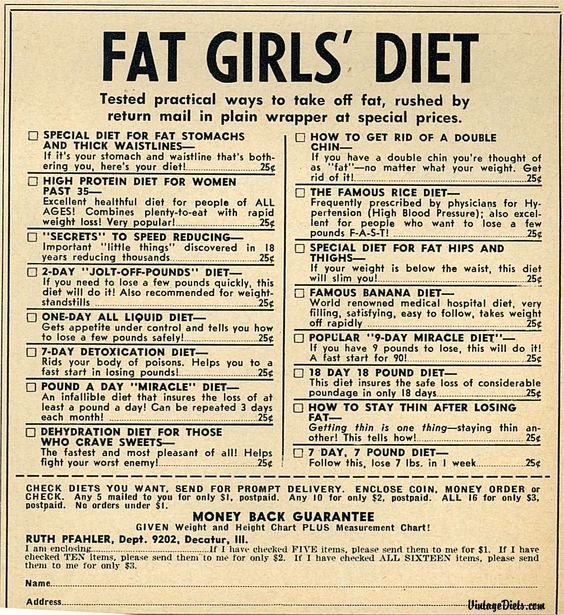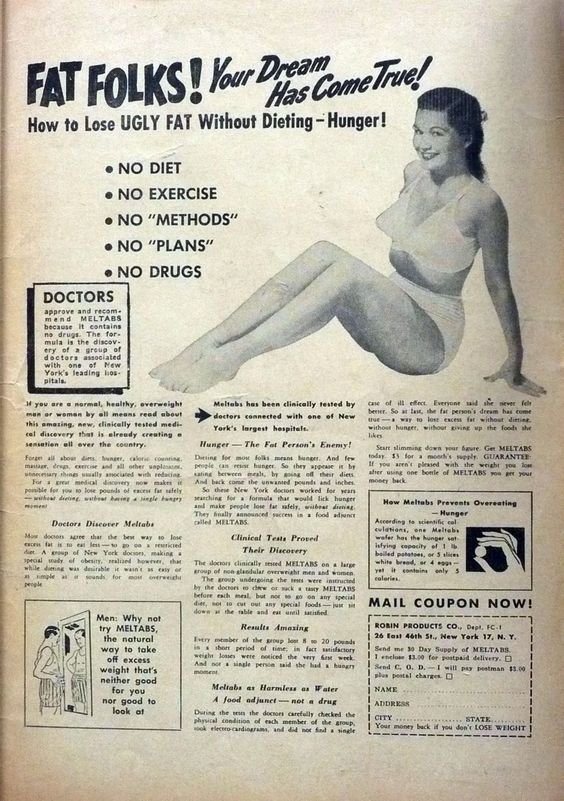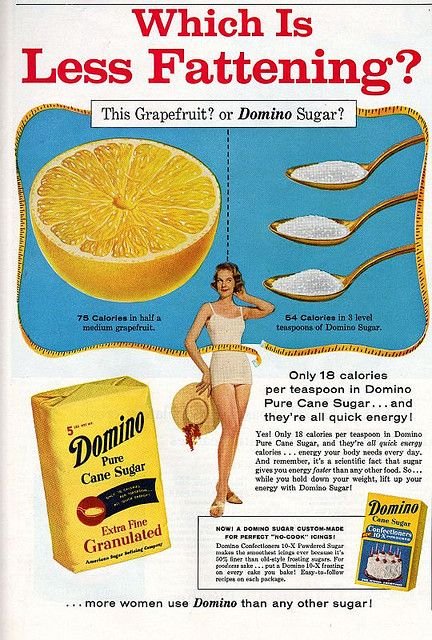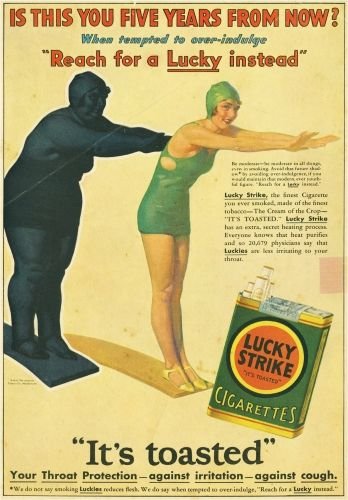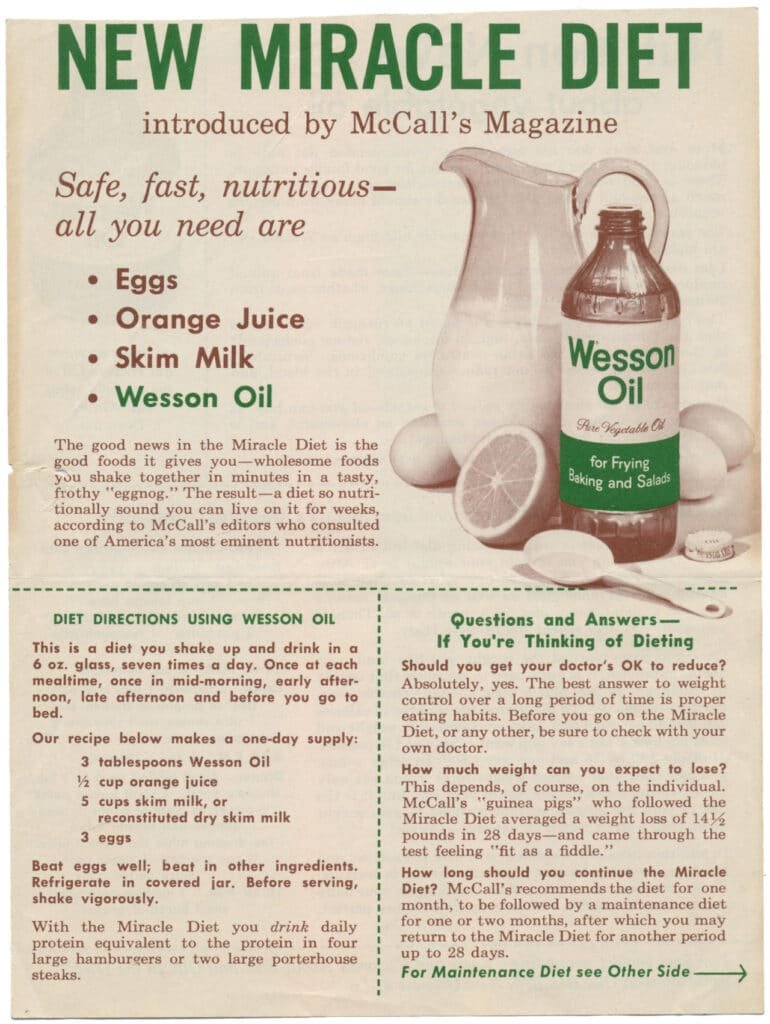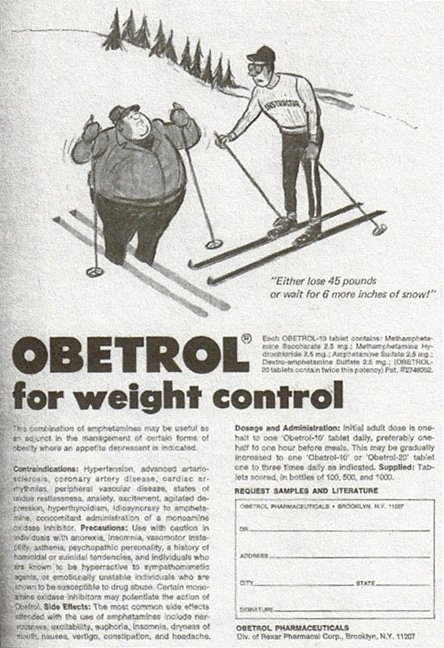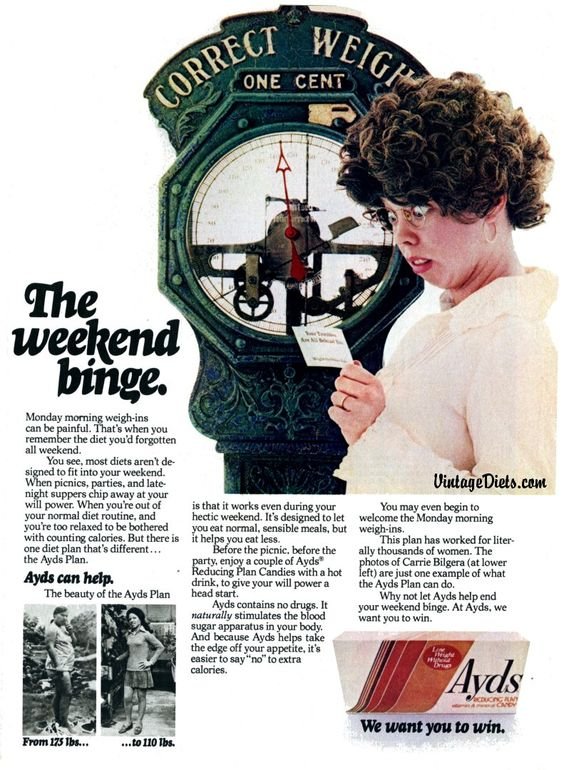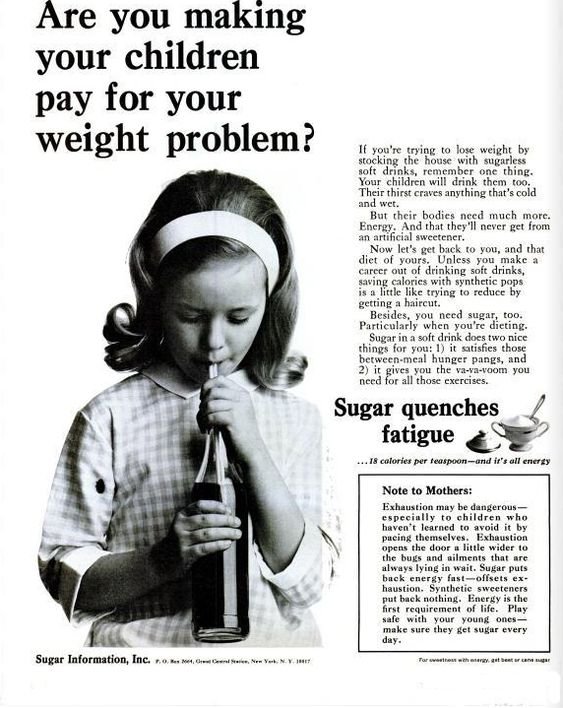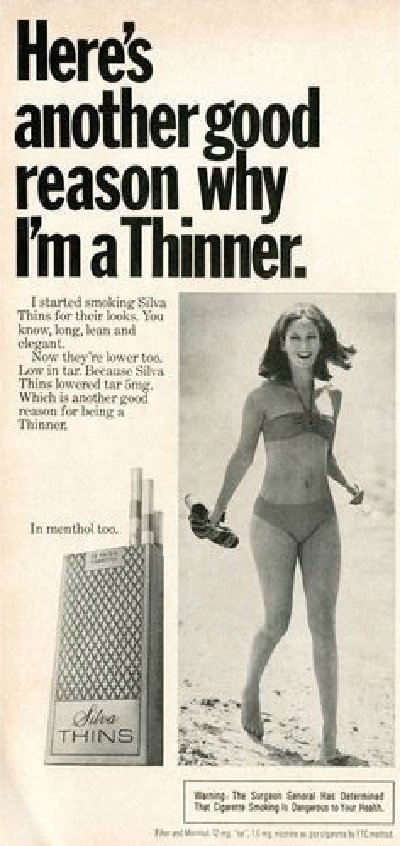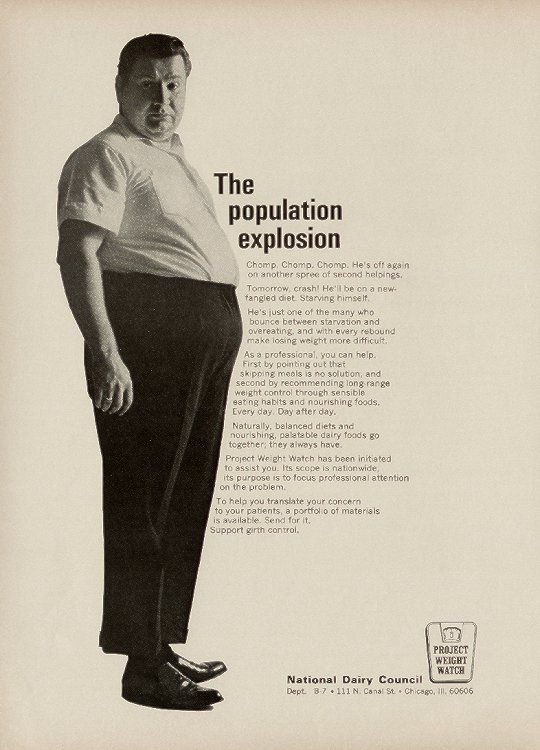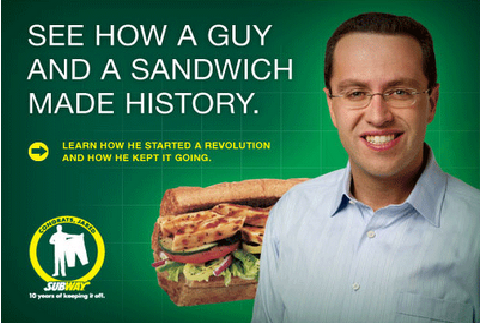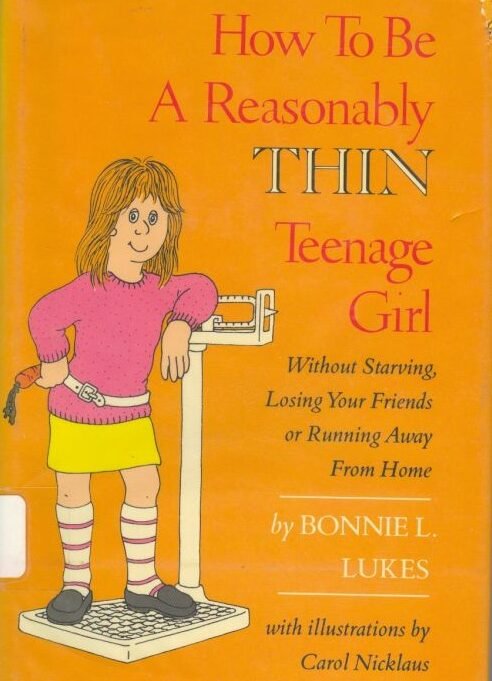Smokes,
Soaps,
and
Sexy
Grapefruit
An incomplete visual history of the many completely reasonable, safe, and effective options for erasing your being, according to advertising.
Diets, diuretics, and disfigurement, oh my. Write to a chemical company for some mystery pills? Inhale carcinogens? Swallow a nightly laxative? Replace solid food with a slurry of milk, orange juice, raw eggs, and vegetable oil? Take meth? Install a spigot in your torso? All bets are off when trying to part people from their money to avoid the horror of fatness, as are all scientific principles and all ethics.
Why do we keep throwing our money down these wells? Because culture never tires of reminding us that:
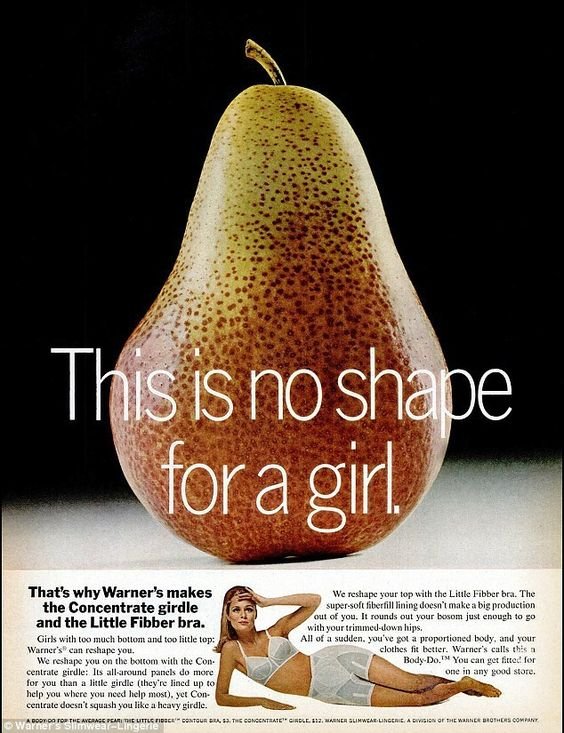
“When you look at a fat person now, regardless of your own weight, you see a manifestation of ob*sity because of a social process called pathologization, which was first conceptualized with respect to fatness by narrative medicine researcher Rachel Fox and her team. Pathologization reduces an individual down to the qualities or stereotypes of a disease as dictated by dominant medical knowledge. When you see a fat person, you associate them with ob*sity. What you believe about ob*sity and have internalized from health authorities—its causes, symptoms, consequences, treatment, and more—then guide your interaction with that fat person. You see an affliction to be cured rather than a human being. Fatphobia starts at the top, with scientific authorities who set the tone for how we think about health and illness, then seeps down to shape the lives of every fat person everywhere.”
No Health, No Care: The Big Fat Loophole in the Hippocratic Oath
Marquisele Mercedes


